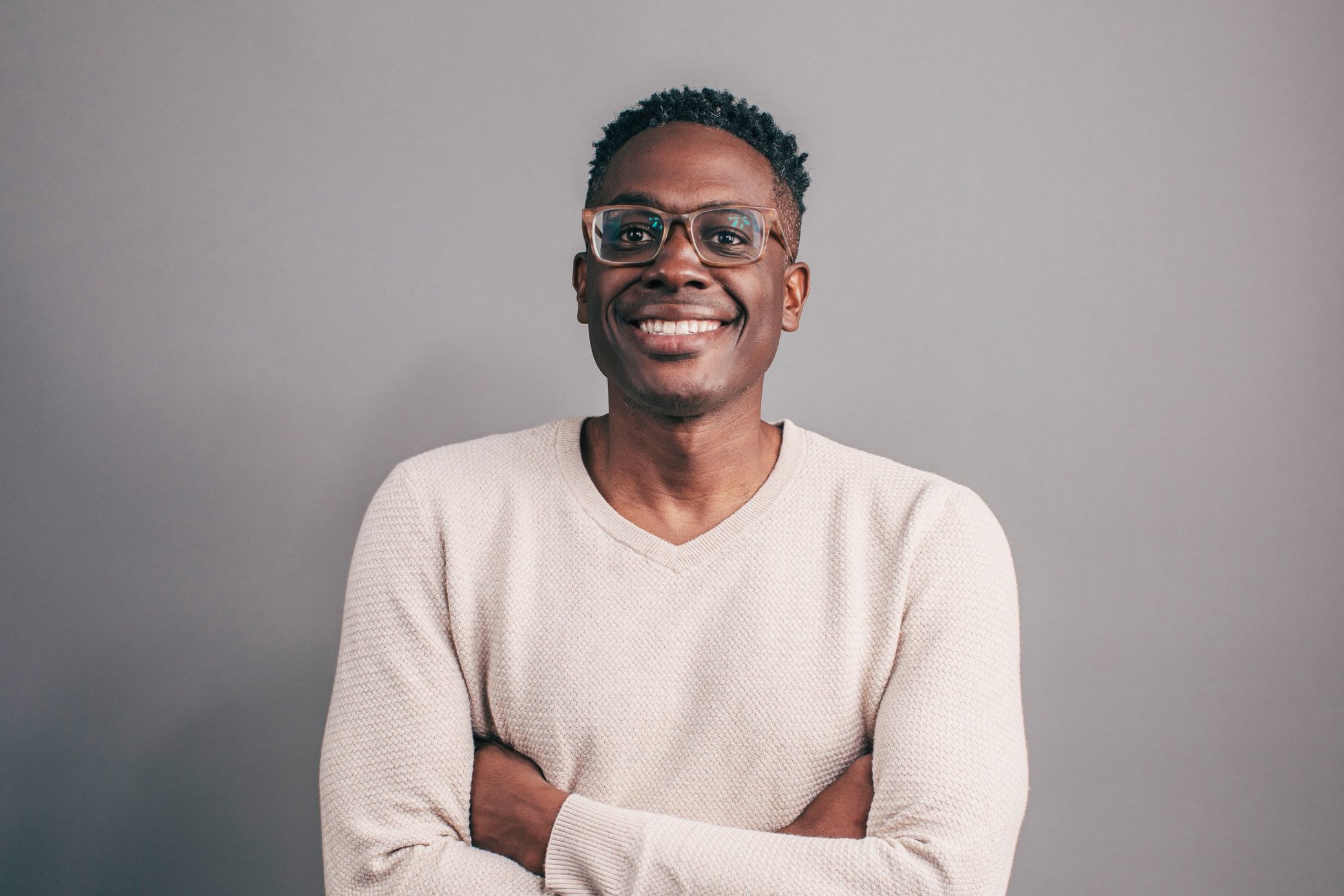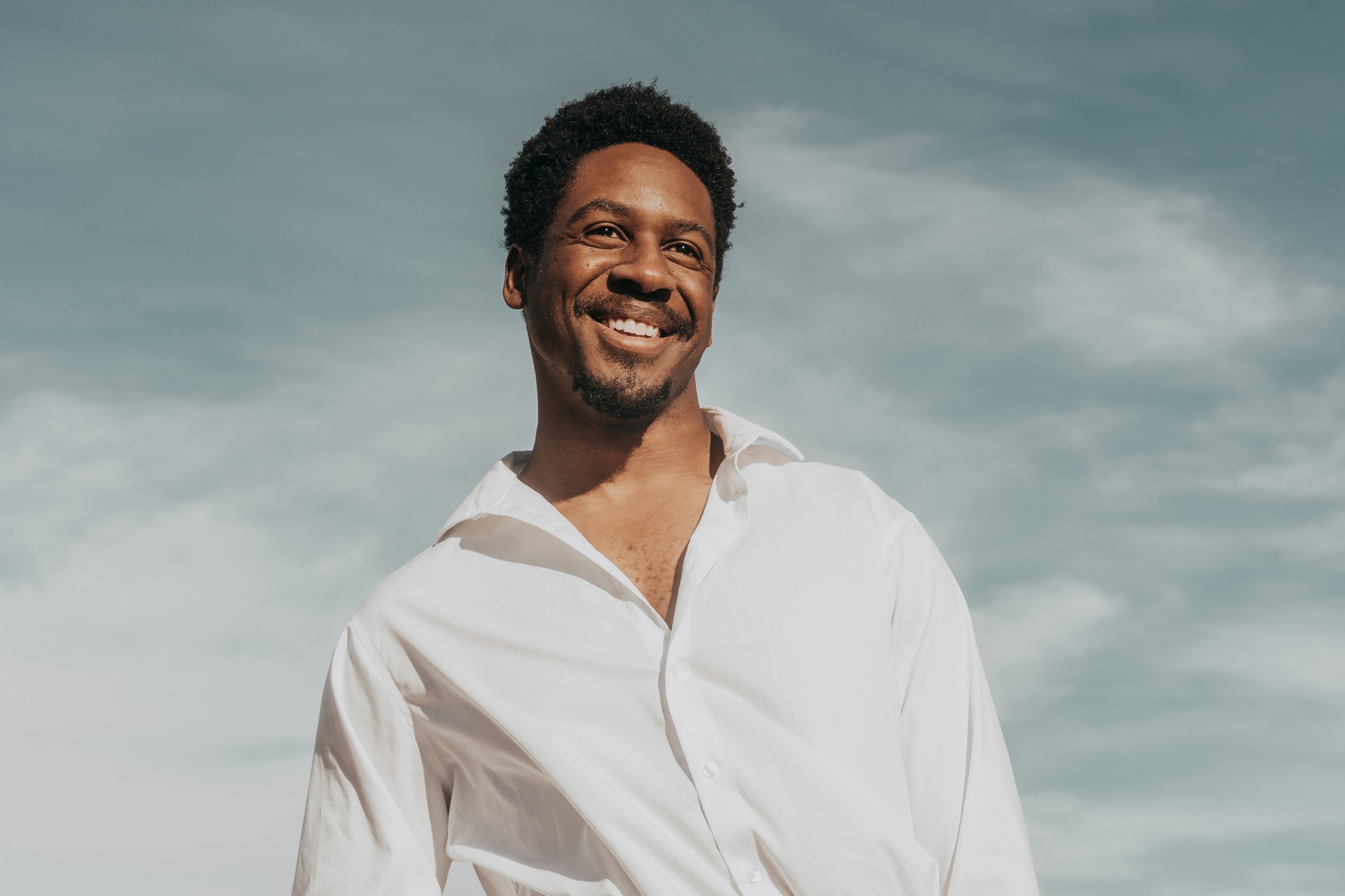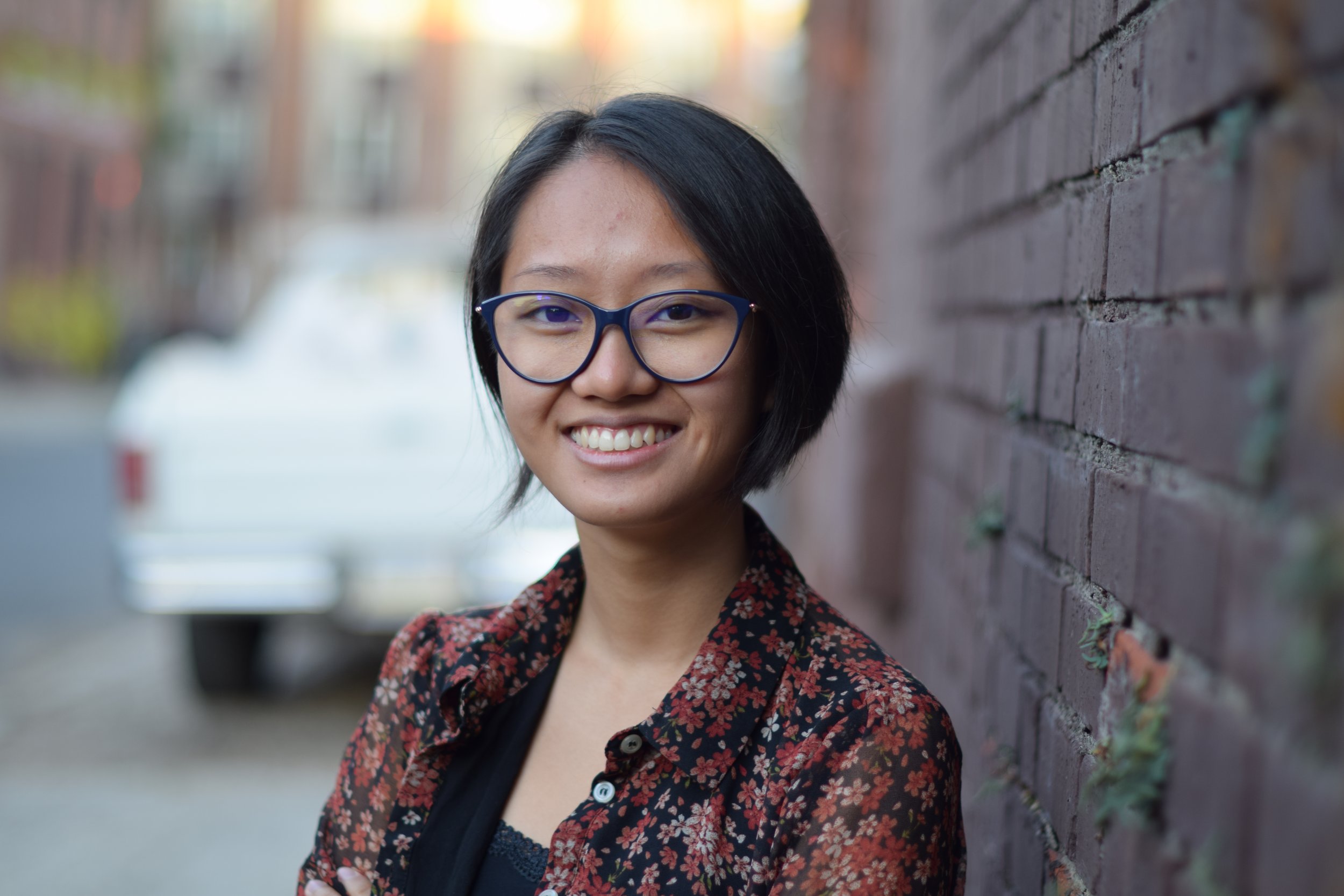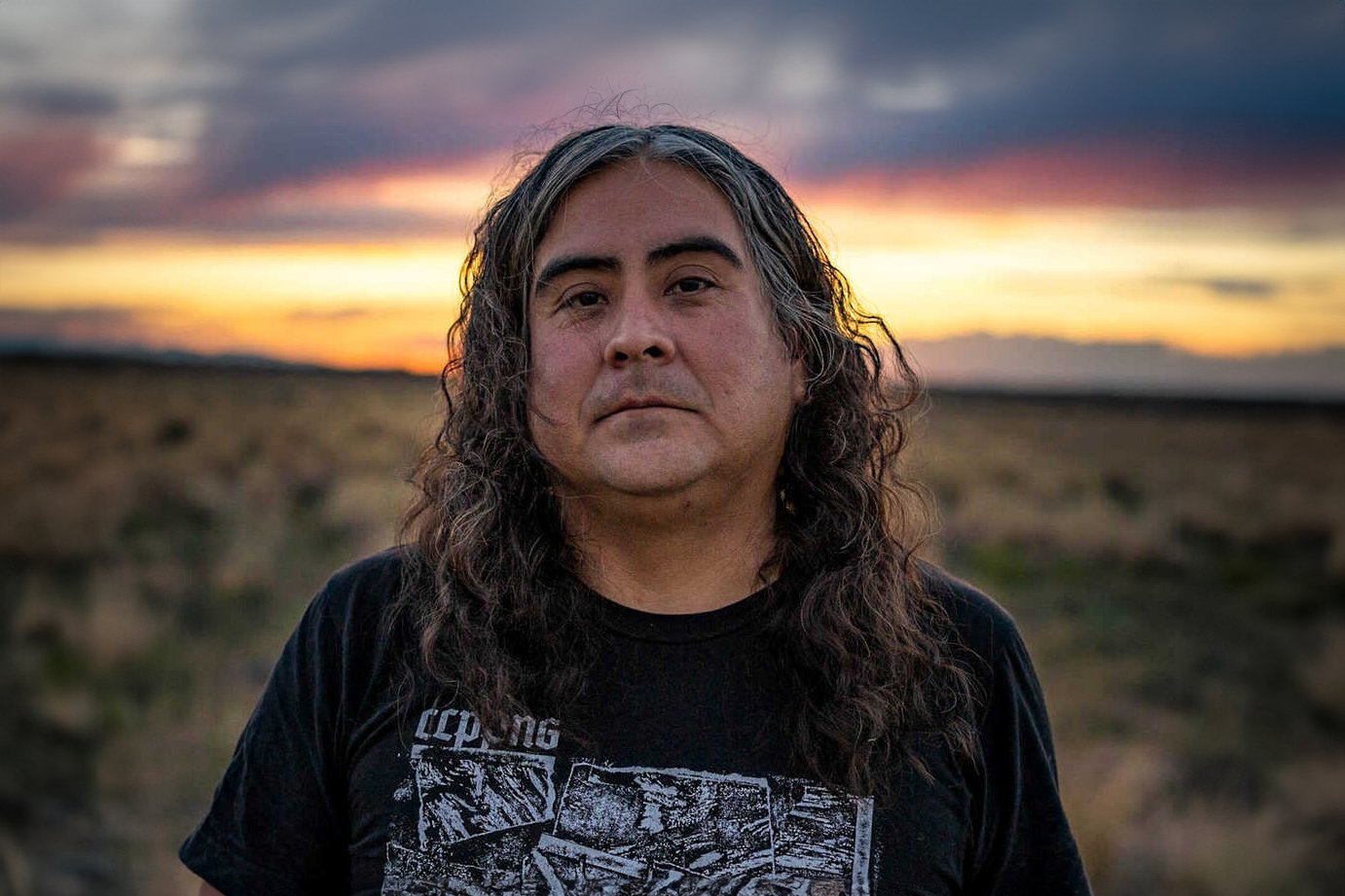
03/25/24 – 7:30pm
First Congregational Church
1031 S. Euclid Ave
Sarasota FL 34237
Streaming Online via www.ensrq.org
Raven Chacon’s Pulitzer Prize-Winning Voiceless Mass anchors this program of powerful works for mixed instrumentation. Our second World Premiere and enSRQ Commission from Kyle Rivera, written for our enSRQ Artists, follows works by Ania Vu, Shawn Okpebholo and Sarah Kirkland Snider.
enSRQ’s commission and world premiere of Kyle Rivera’s ‘ZvasAna’ was made possible thanks to the generous underwriting support of Pamela Anne & Richard H. Palmer.
enSRQ Artists Underwritten by Bob & Debbie Hendel and Ben & Gigi Huberman
Live-Streaming made possible by the generosity of Edward and Annette Eliasberg
Program
| Sarah Kirkland Snider | You Are Free (2016) – 7’ |
|
Samantha Bennett, violin Natalie Helm, cello Betsy Hudson Traba, flute Sergey Guturov, clarinet Conor Hanick, piano |
| Shawn Okpebholo | Distance (2016) – 12’ |
|
Natalie Helm, cello George Nickson, marimba |
| Kyle Rivera |
ZvasAna (2024) enSRQ COMMISSION & WORLD PREMIERE |
|
Samantha Bennett and Jennifer Best Takeda violins Natalie Helm, cello Betsy Hudson Traba, flute Sergey Guturov, clarinet Conor Hanick, piano Marcelina Suchocka, percussion George Nickson, conductor |
| Ania Vu | Five in One (1982) – 12’ |
|
Prelude (violin solo) I Interlude 1 (bass clarinet solo) II Interlude 2 (cello solo) III Interlude 3 (piano cadenza) IV Postlude |
|
Samantha Bennett, violin Natalie Helm, cello Betsy Hudson Traba, flute Sergey Guturov, clarinet Conor Hanick, piano |
| Raven Chacon | Voiceless Mass (2021) – 19’ |
|
Sam Nelson, pipe organ Samantha Bennett and Jennifer Best Takeda, violins Jonas Benson, viola Natalie Helm, cello John Miller, bass Betsy Hudson Traba, flute Sergey Guturov and Calvin Falwell, clarinets Marcelina Suchocka and Scott Crawford, percussion TBD, electronics George Nickson, conductor |
Sarah Kirkland Snider
writes music of direct expression and vivid narrative that has been hailed as “rapturous” (The New York Times), “groundbreaking” (The Boston Globe), and “ravishingly beautiful” (NPR). Recently named one of the “Top 35 Female Composers in Classical Music” by The Washington Post, Snider’s works have been commissioned by renowned orchestras, soloists and chamber musicians across the globe. The winner of the 2014 Detroit Symphony Orchestra Lebenbom Competition, Snider’s recent works include Forward Into Light, an orchestral commission for the New York Philharmonic inspired by American women suffragists; Drink the Wild Ayre, the final commission for the legendary Emerson String Quartet’s farewell tour; Mass for the Endangered, a Trinity Wall Street-commissioned prayer for the environment for choir and ensemble, programmed by dozens of choirs the world over; Embrace, an orchestral ballet for the Birmingham Royal Ballet; and Hildegard, an upcoming opera on 12th c. visionary/polymath/composer St. Hildegard von Bingen commissioned by Beth Morrison Projects, to premiere (venue TBA) in 2025. Her four full-length LPs have garnered year-end nods and critical acclaim from The New York Times, NPR, The Boston Globe, The Washington Post, The Los Angeles Times, Gramophone Magazine and many others. A founding Co-Artistic Director of Brooklyn-based non-profit New Amsterdam Records, Snider has an M.M. and Artist’s Diploma from the Yale School of Music, and a B.A. from Wesleyan University. She will be a Visiting Lecturer at Princeton University in Fall 2023. Her music is published by G. Schirmer.
You Are Free
In 2015, Grand Valley State University New Music Ensemble, in a project called “Music In Their Words,” commissioned nine composers, including me, to create works that utilized the speaking voice of a significant 20th-century composer, one who’d had a strong impact on their own work. I chose Arvo Pärt; when I first encountered contemporary music, he was one of the living composers whose music genuinely moved me. I had read a description of Pärt’s music as “both infinite calm and a house on fire,” which struck me as poignantly apt. The field recording of Pärt’s voice comes from a delightfully earnest video interview he did with Icelandic experimental pop star Björk in the late ‘90s. As I listened to their conversation about the ways music in which music affects a listener, I heard a simple F major triad undulating in marimba, piano, and clarinet. From there, I tried to let the piece unfold relatively free of agenda or judgment, something I don’t often do. The first performance direction is “somewhere between plaintive, tender, and anxious.” The piece can be performed with or without the field recording.
Shawn Okpebholo
GRAMMY®-nominated artist Shawn E. Okpebholo (b. 1981) is a critically acclaimed and award-winning composer. Okpebholo’s music has been featured in recital and concert series in nearly every US state and around the world and his work has been supported by grants from the National Endowment for the Arts, Chamber Music America, Barlow Endowment for the Arts, Illinois Arts Council, Tangeman Sacred Music Center, and others. NPR selected his art song “The Rain” as one of the 100 Best Songs of 2021, with only a few classical works making the ranking. His compositions have appeared on six commercially released albums, including “Steal Away,” his first album solely devoted to re-imagined Negro spirituals, and his second solo GRAMMY®-nominated album, “Lord How Come Me Here?”. As a pedagogue, Okpebholo has conducted masterclasses at various academic institutions worldwide, including two universities in Nigeria. His research interests have led to ethnomusicological fieldwork in both East and West Africa, resulting in compositions, transcriptions, and academic lectures.
He earned his master’s and doctoral degrees in composition from the College-Conservatory of Music (CCM) at the University of Cincinnati. During his upbringing, a significant part of his music education came from The Salvation Army church, where he received free music lessons regularly. Inspired by that altruism, Okpebholo is deeply passionate about music outreach to underserved communities. He recently completed a residency with the Chicago Opera Theater, culminating in the premiere of his first opera, “The Cook-Off,” with acclaimed librettist Mark Campbell. He currently holds the position of Jonathan Blanchard Professor of Music Composition at Wheaton College-Conservatory of Music (IL) and serves as the Saykaly Garbulinska Composer-in-Residence of the Lexington Philharmonic. Shawn E. Okpebholo resides in Wheaton, IL, a suburb of Chicago, with his wife, violist Dorthy, and their daughters, Eva and Corinne.
Distance
for cello and marimba, is work I composed in remembrance of my beloved colleague Roger Lundin and is inspired by the elegant and poignant poem, Distance (an elegy for Roger), penned by poet Miho Nonaka, also Roger’s colleague and friend. The choice of instrumentation was no accident. Both the cello and marimba are considered soft instruments but can be rich in timbre. That was Roger, a soft-spoken and humble man who had such richness and depth in his speech, not just in tone, but also substance. In this composition, I wanted to musically and cohesively evoke many ideas expressed in Nonaka’s poem: the body, devotion, music and faith, joy (imagery of the flies), space, breath, and words. This work includes two musical quotations: the spiritual, Prepare Me One Body, and one of the great hymns of the Christian Church, For All the Saints (Ralph Vaughan William’s tune, Sine Nomine). I decided to quote these tunes for three reasons. First, these were some of Roger’s favorite songs, and it was important to me that I honor him that way. Secondly, there are elements in Nonaka’s poems, including the idea of the body, grace, and hymnody that providentially connects these songs with her words. And lastly, Roger truly embodied the texts of these two melodies, including:
from ‘Prepare Me One Body’:
Here I am, I come to do your will: to build the reign of God.
and from ‘For All the Saints’:
For all the saints, who from their labors rest,
Who Thee by faith before the world confessed,
Thy name, O Jesus, be forever blest.
This work is dedicated to Susan Lundin, Roger’s wife.
Kyle Rivera
The ever-evolving artistic perspective of Kyle Rivera (b. 1996) makes his music a space for intrigue and exploration. Kyle is fascinated by visual imagery in sound and the way it can create windows into his mind. Sound and time are malleable objects with which he sculpts vivid sonic landscapes. He often draws upon the diverse sonic and cultural environments he grew up in to craft the soundscapes of his music. Interests in linguistics, spirituality, and media all influence the way he creates music. One of Kyle’s goals as an artist is to offer a perspective on the world through his personal experiences. Some of his music has focused on topics relating to social justice, equality, and racialized matters. Alongside that, his music explores the conceptual limits of psychology, spirituality, and consciousness in sound. As a composer, his music has been performed across the United States and internationally in Russia, Thailand, Hong Kong, and China. Kyle was the 2023 Anne Spencer Fellow with the Virginia Center for the Creative Arts. He received a 2024 MacDowell Fellowship and an Aaron Copland House Residency. Future projects include collaborations with Tacet(i) Ensemble, enSRQ, Juventas Ensemble, Great Lakes Chamber Music Festival, and Bent Frequency.
ZvasAna
According to Buddhaghosa’s Visuddhimagga, an intricate classical work from the Theraváda school of Buddhism, mindfulness of breathing was described by the Blessed One as “both peaceful and sublime. ” In ZvasAna, my goal is to explore the way that breath penetrates our reality. The quiet terror of its fragility and the splendid tranquility of its power to give life. Breath is energy, spirit, emotion, and love. Meditation on breathing can give us a glimpse at the realm beyond human comprehension while simultaneously connecting us closer to the depths of our inner selves. My goal in the music is to consider what happens when the invisible effects of breath become the sole object of our awareness.
Ania Vu
Polish of Vietnamese descent composer and pianist, Ania Vu (née Vũ Đang Minh Anh) writes music that explores the interplay between the sound properties of the words and their meanings, musical energy related to form, and varied notions of time. She also enjoys crafting her own text that serves as a sonic, formal, and expressive guiding reference in her musical writing process. Ania was the 2022-23 Postdoctoral Researcher at the University of Chicago’s Center for Contemporary Composition and a 2021-23 composer fellow with the Composers & the Voice, a two-year training program that provides experience writing for the voice and opera stage. She received her Ph.D. from the University of Pennsylvania and her B.M. in composition and theory from the Eastman School of Music. In the fall of 2023, Ania serves as Lecturer in Music Composition at the University of Texas at Austin’s Butler School of Music. Together with pianist Eunmi Ko, they started an initiative called The Music She Writes, a series of four virtual concerts featuring 25 works by Asian female composers. This project aims to highlight the diversity and significance of music by a very large, yet underrepresented community. Outside of music, Ania has a deep interest in languages, and speaks fluent English, Polish, French, and Vietnamese, in addition to having studied Latin, German, and Greek.
Five in One
in nine short movements uses texture as the primary force in establishing the piece’s structure, and comprises four tutti and five interjecting solo movements. In this context, the term texture means a combination of density, volume, articulation, and range. Because this particular ensemble combines instruments of such contrasting timbres, I was interested in treating all instruments equally in relation to one another, and have them sound together as one entity, or one instrument. The piece explores this idea in the tutti movements, sometimes shifting the texture from quasi-micropolyphonic to quasi-homophonic. The prolonged masses of sounds then contrast with solo instrumental interludes in between that play the introductory, transitional, and terminative roles. Although the piece is divided into many short movements, its movements are mostly played attacca to create an uninterrupted trajectory.
Raven Chacon
was born in 1977 in Fort Defiance, Arizona, US within the Navajo Nation. He attended the University of New Mexico, where he obtained his BA in Fine Arts in 2001, then received an MFA in music composition from the California Institute of the Arts. Chacon’s visual and sonic artwork has been exhibited widely in the U.S. and abroad.[ His room-sized sound and text installation, Still Life, #3 (2015), was exhibited in the Transformer: Native Art in Light and Sound exhibition at the National Museum of the American Indian, New York. Chacon also performs in the groups KILT with Bob Bellerue, Mesa Ritual with William Fowler Collins, Endlings with John Dieterich, and collaborations with Laura Ortman. In 2016, he was commissioned by Kronos Quartet to compose a work for their Fifty For The Future project. Chacon serves as Composer-in-Residence with the Native American Composers Apprenticeship Project. In 2012, he was awarded a Creative Capital Visual Arts grant. In 2014, he was honored with a Native Arts and Cultures Foundation National Artist Fellowship in Music. In 2018, Chacon was awarded the Berlin Prize by the American Academy in Berlin. In 2022, Chacon became the first Native American to win the Pulitzer Prize for Music, which he received for his composition Voiceless Mass.
Voiceless Mass
Raven Chacon’s Pulitzer Prize-Winning Voiceless Mass is a large ensemble work commissioned by WI Conference of the United Church of Christ, Plymouth Church UCC, and Present Music and composed specifically for the Nichols & Simpson organ at The Cathedral of St. John the Evangelist in Milwaukee, Wisconsin but can be performed in any space of worship with high ceilings and pipe organ. The composition was a site-specific commission to utilize the organ for Present Music’s annual Thanksgiving concert. As an Indigenous artist, Chaon makes a point not to present his work on this holiday, but in this case he made an exception.
This work considers the spaces in which we gather, the history of access of these spaces, and the land upon which these buildings sit. Though ‘mass’ is referenced in the title, the piece contains no audible singing voices, instead using the openness of the large space to intone the constricted intervals of the wind and string instruments. In exploiting the architecture of the cathedral, Voiceless Mass considers the futility of giving voice to the voiceless, when ceding space is never an option for those in power.







